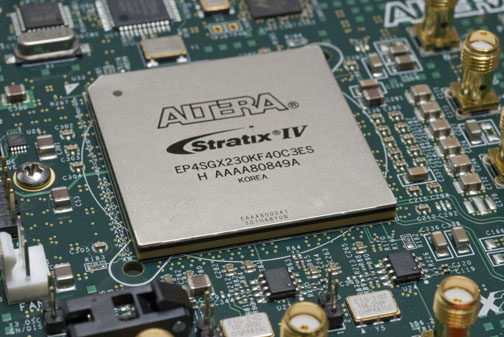FPGA design is not a simple chip research, but mainly uses the FPGA model to design products in other industries. Unlike ASICs, FPGAs are widely used in the communications industry. Through the analysis of the global FPGA product market and related suppliers, combined with the current actual situation in my country and domestic leading FPGA products, we can discover the future development direction of related technologies, which will play a very important role in promoting the overall improvement of my country's technological level.

Compared with traditional chip design, FPGA chips are not simply limited to research and design chips, but can be optimized for products in many fields with the help of specific chip models. From the perspective of chip devices, FPGA itself constitutes a typical integrated circuit in a semi-custom circuit, which contains a digital management module, an embedded unit, an output unit, and an input unit. On this basis, it is necessary for FPGA chips to focus on comprehensive chip optimization design, and to add new chip functions by improving the current chip design, thereby achieving the simplification and performance improvement of the overall chip structure.
Basic structure
FPGA device is a kind of semi-custom circuit in the application-specific integrated circuit, which is a programmable logic array, which can effectively solve the problem of fewer gate circuits in the original device. The basic structure of FPGA includes programmable input and output units, configurable logic blocks, digital clock management modules, embedded block RAM, wiring resources, embedded dedicated hard cores, and underlying embedded functional units. Because FPGA has the characteristics of abundant wiring resources, repeatable programming, high integration, and low investment, it has been widely used in the field of digital circuit design. The FPGA design process includes algorithm design, code simulation and design, board debugging, designers and actual needs to establish the algorithm architecture, use EDA to establish a design plan or HD to write design code, through code simulation to ensure that the design plan meets actual requirements, and finally board Level debugging, use the configuration circuit to download the relevant files to the FPGA chip to verify the actual operation effect.
Working Principle
FPGA adopts the concept of logic cell array LCA (Logic Cell Array), which includes three parts: Configurable Logic Block (CLB), Input Output Block (IOB) and Interconnect. Field programmable gate array (FPGA) is a programmable device. Compared with traditional logic circuits and gate arrays (such as PAL, GAL and CPLD devices), FPGA has a different structure. FPGA uses a small look-up table (16×1RAM) to realize combinational logic. Each look-up table is connected to the input of a D flip-flop, and the flip-flop drives other logic circuits or I/O to form a combination that can be realized. The logic function can also realize the basic logic unit module of the sequential logic function. These modules are connected to each other or I/O modules by metal wires. FPGA logic is realized by loading programming data into the internal static storage unit. The value stored in the memory unit determines the logic function of the logic unit and the connection between modules or between modules and I/O, and finally determines The function that FPGA can realize, FPGA allows unlimited programming.